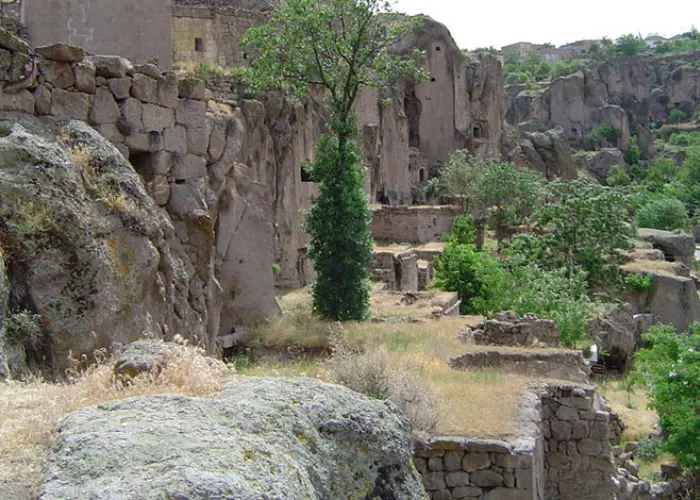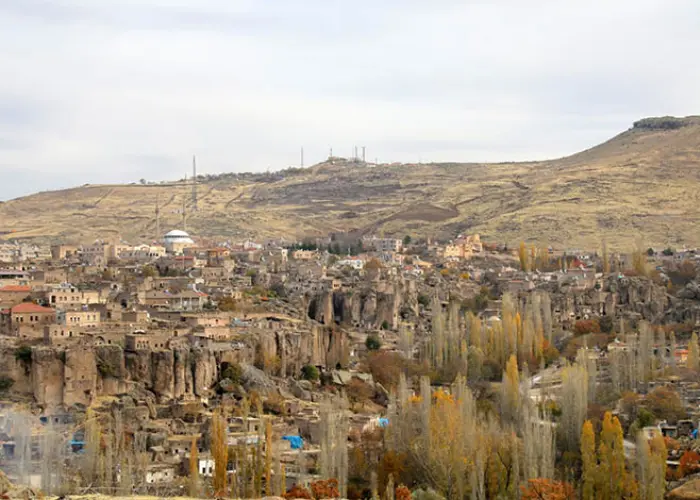Aksaray Monastery Valley
Ancient Sites
Walk-in
Aksaray Monastery Valley
Ancient Sites
Price Without Pass: €3
Free with Cappadocia Travel Pass®
Your digital pass includes:
Free access to 35+ top Attractions
All digital, Show&Go easy Access
Saving guarantee after purchase
Huge savings up to 70%
Starting from just €175
Cancel anytime!
Discover the Roots of Religions
50 kilometers outside the city center, in the Güzelyurt district of Aksaray, sits the Monastery Valley. It is a valley that spans 4-5 kilometers and is contained within the Güzelyurt district. The Valley has a highly significant place in history as the center of the expansion of Christianity in Anatolia, the establishment of Orthodox sectarianism, and the development of monastic life.
About The Aksaray Monastery Valley
Mobile ticketing - No need for a printed voucher, we're digital!
Duration - Unlimited Free time.
Instant confirmation - No reservation needed - instant confirmation
Highlights
Explore the valley where Christianity spread in Anatolia
Walk on the thousand years old stones
Have a glimpse of the lives of the first monotheistic lives
Includes
Entrance to Aksaray Monastery Valley
Details
The Monastery Valley is located 50 kilometers from the city center, in the Güzelyurt neighborhood of Aksaray. Güzelyurt has a highly significant place in history as the center of the expansion of Christianity in Anatolia, the establishment of Orthodox sectarianism, and the development of monastic life.
The majority of Christians were concentrated in Güzelyurt. The nearly 50 churches and monasteries scattered around the 4.5-kilometer-long valley are the most unambiguous indication of this. It is worthwhile to visit the spectacular historical remains and artifacts along the valley from the lower portion of the Güzelyurt area to Sivrihisar Village.
Hours & Meeting
Opens every day
Opening time: 08:30
Closing time: 17:00
How To Get There?
Yeni Mahallesi, Cevizli Sokak, Güzelyurt, Aksaray
All About Aksaray Monastery Valley
50 kilometers outside the city center, in the Güzelyurt neighborhood of Aksaray, is Monastery Valley. It is a valley that is 4–5 kilometers long and is contained within the Güzelyurt district. Güzelyurt played a crucial role in the development of Orthodox sectarianism, the spread of Christianity in Anatolia, and the establishment of monastic life.
The majority of Christians were concentrated in Güzelyurt. The nearly 50 churches and monasteries scattered around the 4.5-kilometer-long valley are the most unambiguous indication of this. Beautiful historical artifacts and ruins may be found along the valley that runs from Sivrihisar Village to the bottom part of the Güzelyurt region.
Numerous churches and underground cities from the Byzantine era can be found along the valley, including the Büyük Church Mosque, Sivişli Church, Priest House, Kalburlu Church, Kömürlü Church, Hac Saadet Koç Church, Cafarlar Church, ömlekçi Church, and Meryem Church. The Valley conceals the remains of the ancient monastic life despite having housed numerous people in its monasteries and churches. In order to propagate Christianity throughout Anatolia, the theological thinker Saint Gregorius Theologos of Nenezi (Bekarlar) made Güzelyurt his headquarters in the fourth century. As a result, the first monastic settlements best capture the essence of their time.
What is there to see in the Monastery Valley
The 28 churches in the valley are divided into 17 single-nave, 7 double-nave, 1 triple-nave, 1 free cross, and 2 closed Greek cross structures. In churches in Güzelyurt, 5 of the 7 primary floor plan types found in the Cappadocia Region may be found.
The Iconoclasm Period was brought on by Arab incursions that started in the seventh century (the Prohibition of Depiction ). Figurative representations were prohibited during this time, which started at the beginning of the 9th century, as a result of the impact of Islam. This rule was upheld across the region, not just in Cappadocia. Clergymen who disobeyed the restriction on depictions found sanctuary in the area's enclosed structure. The area had been governed by Turkey from the end of the 11th century, allowing the local Christians to continue to practice their faith openly. Güzelyurt maintained its identity as a town where Turks and Greeks coexisted up until the population exchange in 1924.
In the Manastir Valley, numerous rock-carved homes, underground cities, and churches have survived to this day. You should include these significant historical sites on your list of places to visit in Aksaray. It is situated at the Manastir Valley's entrance. It is a structure that dates to the Byzantine era. The tunnel starts in a small cave that is reached by a corridor. The barn is located on the upper story. A staircase leads to the upper floor. There is a cover at the top of the stone stairs. The point of observation is this cover. It is not possible to move forward via the tunnel because water is constantly coming out of the end of the tube that ascends from the observation point.
Gallery
Advantages Of Cappadocia Travel Pass
Cappadocia Travel Pass comes with several benefits. Price reduction is one of the biggest benefits but surely not the only one! You can not only save a lot of money by purchasing a Cappadocia Travel Pass but also save a huge amount of precious time by skipping long queues with your pass. Feel like a VIP unlocking the doors of the top attractions and experiences in Cappadocia. Moreover, you can even fly over Cappadocia with a DISCOUNTED hot air balloon and get to experience the mysterious fairy chimneys from the sky!
Aksaray Monastery Valley Frequently Asked Questions
What is there to see in Monastery Valley?
Which is bigger Ihlara Valley or Monastery Valley?
Monastery Valley is the second-biggest valley in Cappadocia that was inhabited by the early Christians. The “Little Ihlara,” as it is informally known, is a 5-kilometer (3.1-mile) natural wonder.
Is it worth visiting Monastery Valley?
Yes, especially if you are interested in the history of religions because the Valley has a very important place in Christianity.
Other Popular Attractions

4.8 out of 5 stars
Cappadocia Travel Pass has an average rating of 4.8 /5 from 1075 reviews
Read all traveler reviews →







There are 28 rock churches, six of which are open to visitors, and two underground cities.